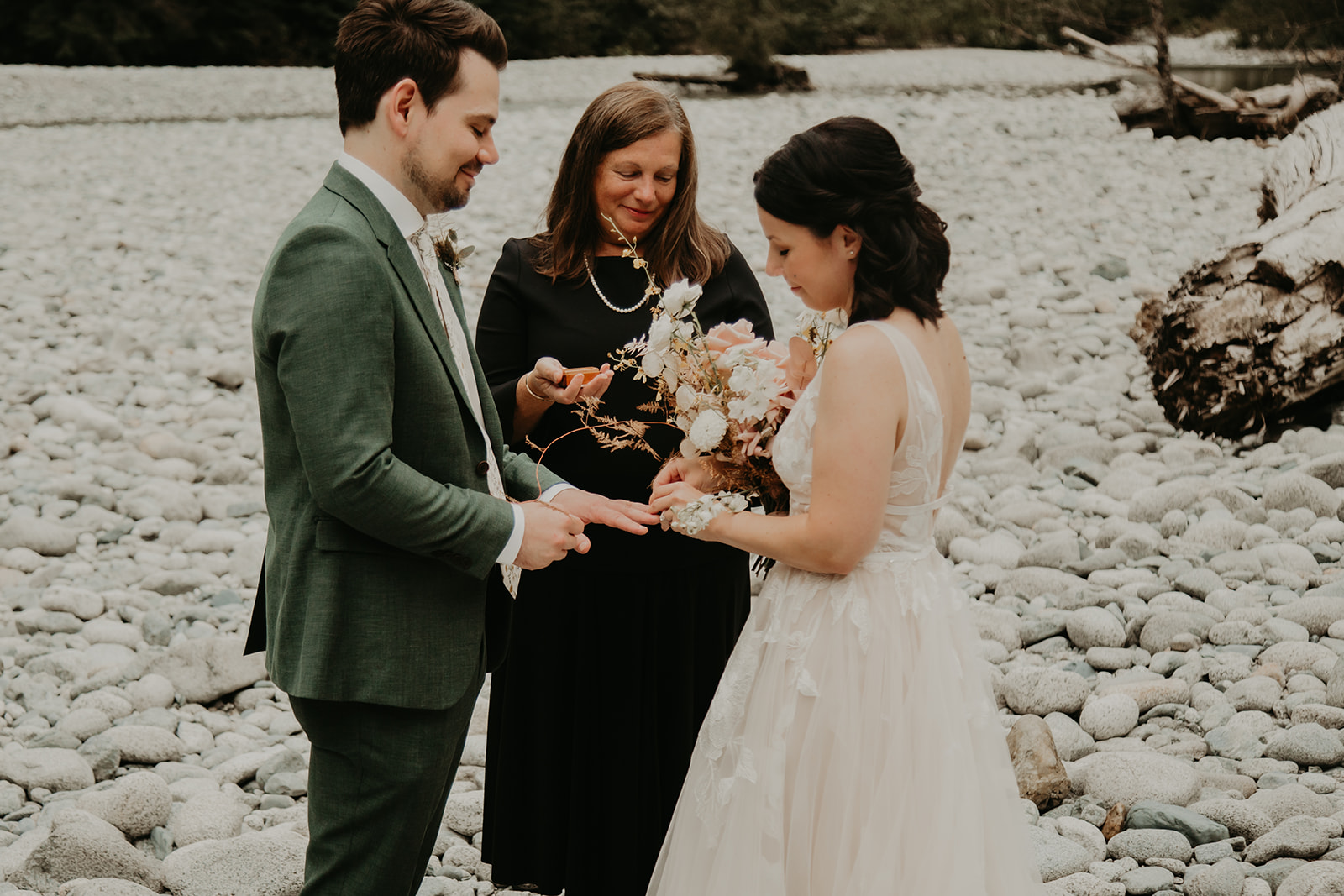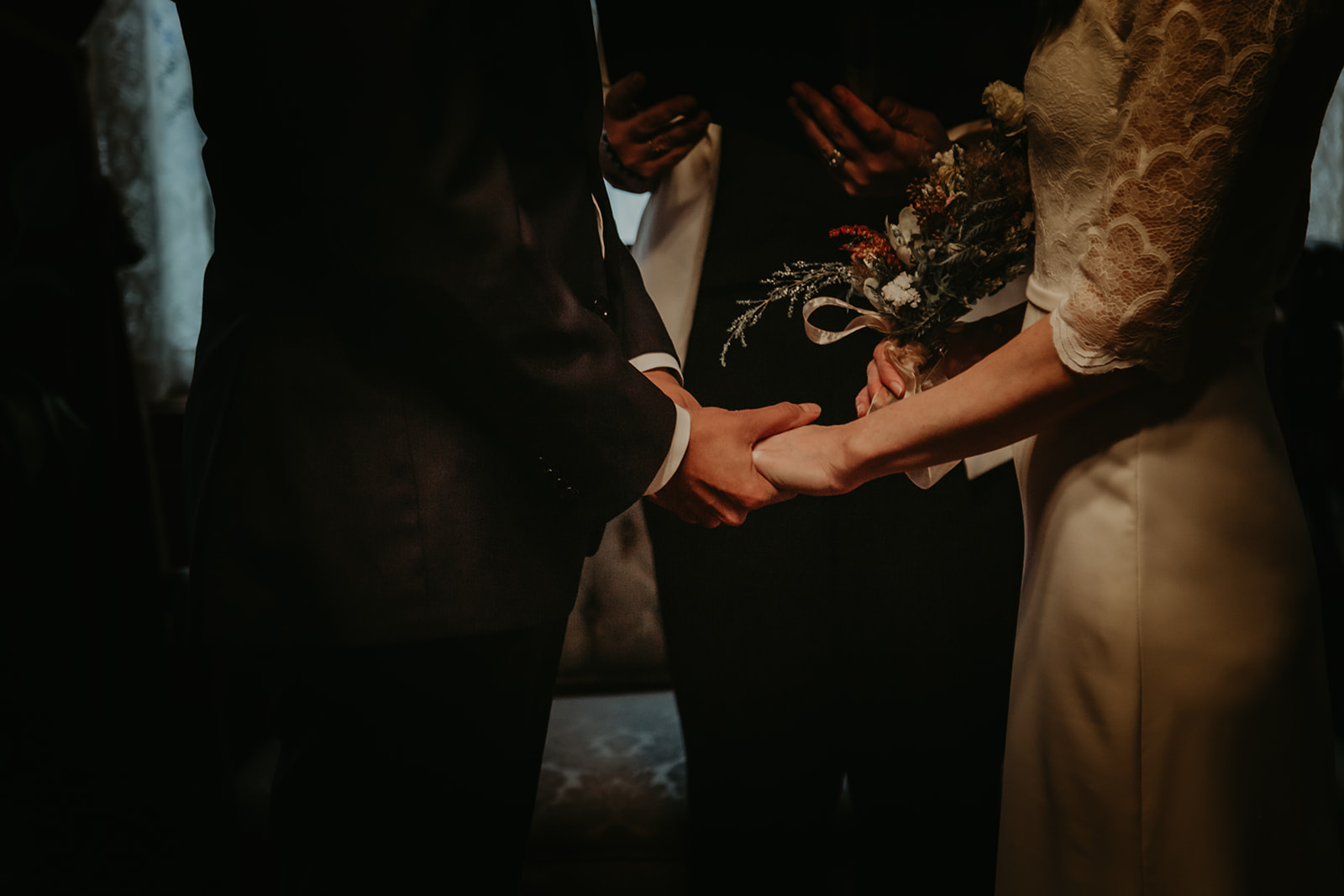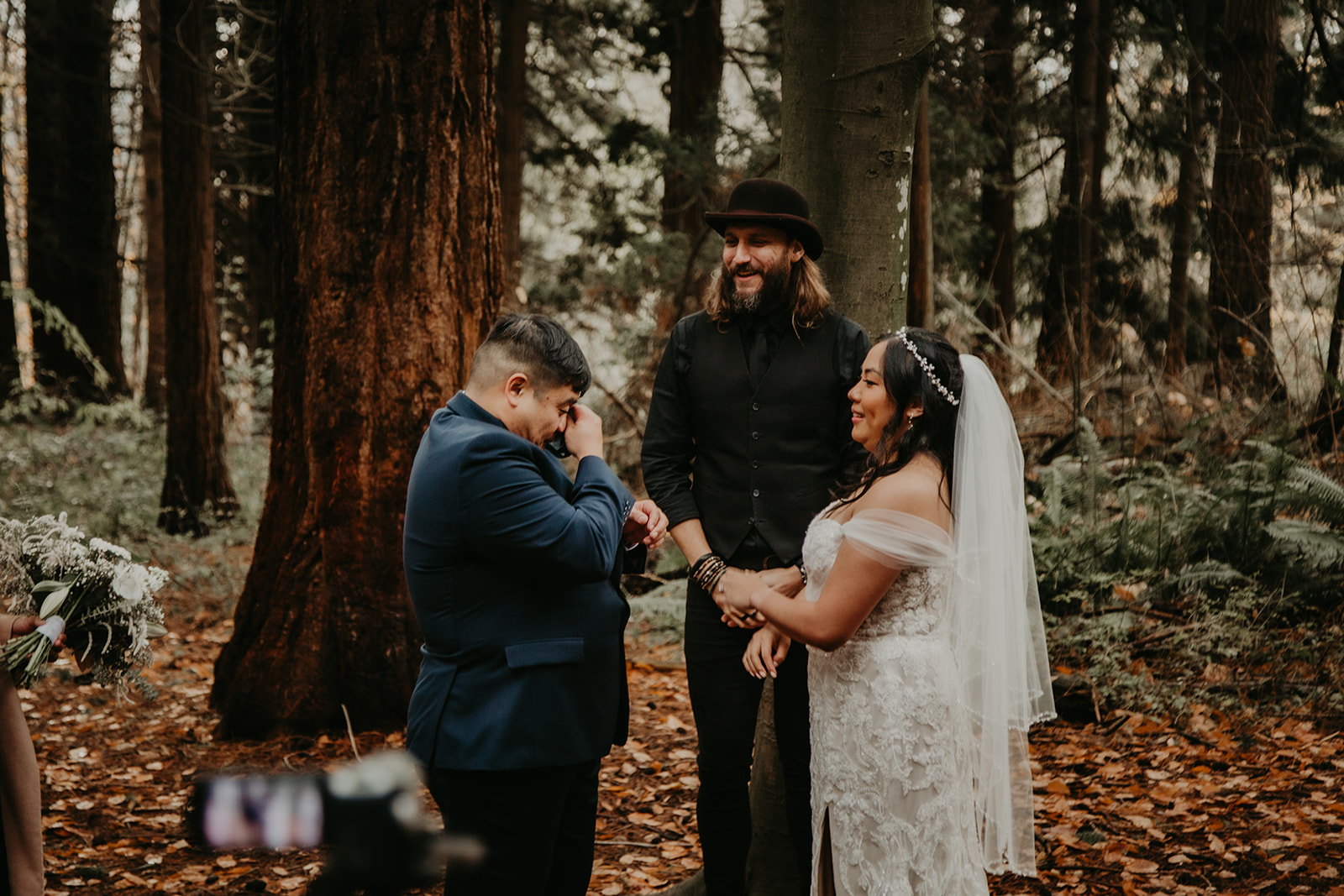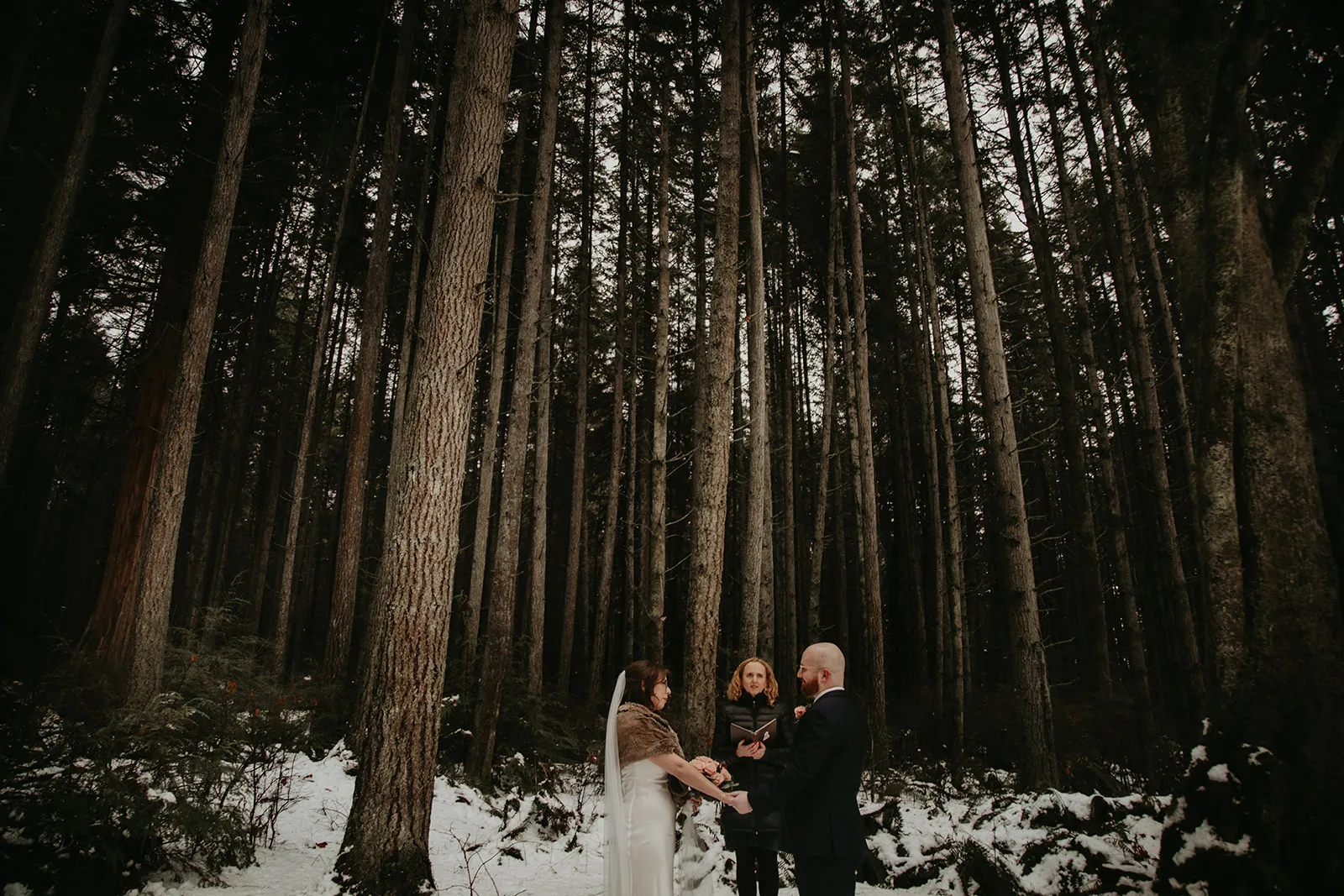As wedding officiants, we like to think of ourselves as wedding ceremony experts. After all, we only officiate hundreds of ceremonies every year! One part of the wedding ceremony that we think deserves more attention is the declaration of intent. It doesn’t get as much fanfare as the vows or the first kiss, but it’s just as important.
What is a declaration of intent?
A declaration of intent is the part in the ceremony where you actually assert that you want to marry your partner – so you can see why we think it’s so important! It’s when your officiant asks if you want to marry the person you’re standing across from and you let them know you certainly do. It’s also known as a commitment statement or statement of intent. Typically, declarations of intent will follow this structure:
Officiant: Do you, YOUR NAME, take PARTNER’S NAME to be your spouse?
You: I do

Is a declaration of intent the same as vows?
Nope, a declaration of intent and your wedding vows are two separate things. Think of your vows as an expansion of your declaration of intent. In the declaration of intent, you confirm that you want to marry your partner. And in your vows, you explain why you want to marry them and what promises you’ll build your marriage upon.
Does every wedding ceremony have a declaration of intent?
While every ceremony is a little bit different and every jurisdiction has their own rules, a declaration of intent is usually part of the wedding ceremony. And in some areas, a declaration of intent is actually a legal requirement. After all, we need to know that you’re consenting to this marriage!

When does the declaration of intent happen?
Typically, the declaration of intent will happen towards the beginning of your ceremony. It usually happens before your vows and ring exchange. Check out our sample wedding ceremony to find out exactly what happens and when during a ceremony.
What is the traditional declaration of intent?
Even if you’ve never heard the term “declaration of intent” or “commitment statement,” you’ve likely heard the traditional version before. It pops up all the time at weddings in real life and in movies or TV shows.
The traditional declaration of intent is as follows:
Officiant: YOUR NAME, do you take PARTNER’S NAME to be your lawful wedded wife/husband/spouse? Do you promise to love and cherish her/him/them, in sickness and in health, for richer for poorer, for better for worse, and forsaking all others, keep yourself only unto her/him/them, for so long as you both shall live?
You: I do

Do I have to use the traditional declaration of intent?
Absolutely not! Unless your ceremony officiant or venue have specific rules, you do not have to use the traditional declaration of intent during your wedding ceremony. As with all things in your ceremony, we believe they should reflect who you are and what you value. If the traditional declaration of intent doesn’t align with your values or just doesn’t sound good to you, you can use a different version.
Check out 8 different declarations of intent you can use for your wedding ceremony, including ones that involve your children or work perfectly for a vow renewal. You can also write your own declaration of intent, choosing the words and promises that uniquely reflect you. Reach out to your Young Hip & Married officiant for advice or scroll through our blog for some inspiration!
Now that you know everything you need to know about the declaration of intent, do you take Young Hip & Married to be your wedding ceremony gurus and the best officiants in the world? If you do, get in touch to book your wedding officiant today!
written by Riana Ang-Canning
featured image by Erica Miller Photography
